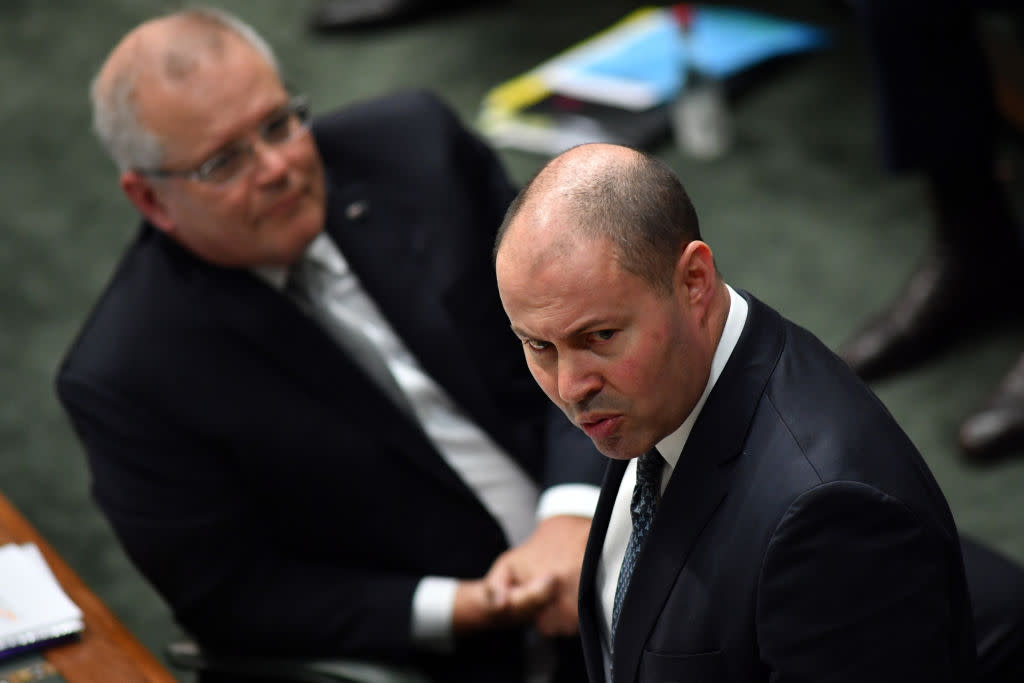The $60 billion JobKeeper error: What went wrong?

On 30 March, Prime Minister Scott Morrison announced a series of stimulus measures designed to ‘build a bridge’ for the economy.
The bridge was financial assistance aimed at getting as many people and businesses as possible to ‘hibernate’ for six months as the economy and society were locked down to deal with the COVID-19 health crisis.
When the health crisis faded, many businesses would have survived despite the recession and therefore could reopen, and a large number of workers could return to work, doing what they did before COVID-19 came along.
More from The Kouk: House prices and Covid-19: How low will they go?
More from The Kouk: This is Australia's 2020 Depression
More from The Kouk: Unemployment rates: It's the government's choice
Workers retaining their attachment to the labour market during the lock down was the central element of the so-called JobKeeper program.
JobKeeper was a payment of $1,500 per fortnight per employee to businesses who would then pass this payment on to the staff that were retained, even if they worked zero hours.
If the business closed, or the staff were sacked or left the workforce, the JobKeeper payment would not apply and not be paid.
It was a good idea and, done well, could have saved many businesses and kept many people with an attachment to the labour market.
JobKeeper was implemented because Treasury and the RBA were telling the government that GDP was forecast to drop by a staggering 10 per cent in the first half of 2020, with the unemployment rate hitting 15 per cent if nothing was done.
While no forecasts for underemployment were released or published, the underemployment rate prior to the COVID-19 lock downs was just under 9 per cent so it would be reasonable to forecast it to also spike, perhaps toward 15 per cent.
Morrison and Treasurer Josh Frydenberg said that over 6 million Australians would receive the JobKeeper payment.
All that business had to do after the announcement was register with the Tax Office an intent to claim the payment, fill in an online application and, if they meet an array of terms and conditions, the first JobKeeper payment would hit their bank accounts during the first week of May.
At first glance, it looked sound, simple and effective.
But as businesses started to apply for the payment, it was clear there were problems.
One problem was timing.
It was clear that many tens of thousands of businesses were forced to shut or severely restrict their operations because of the COVID-19 lockdown laws. They were shut immediately, and in many instances cashflow fell to zero or not much more.
Waiting until May for the JobKeeper payment and having a degree of uncertainty whether they met the extensive checklist of eligibility requirements meant many firms closed before the payment was scheduled to be paid.
They simply sacked their staff as they were unable to find the funds to cover the six-week timeframe before the JobKeeper payment was scheduled to be made.
This is partly why Morrison’s forecast of 6 million people getting the JobKeeper payment was so wrong.
It was too slow to be paid and there were too many regulatory and red tape hurdles to clear for businesses to be paid.
Facts are important
When Treasury revealed the horrendous error in the number of people taking up the JobKeeper payment – just 3.5 million instead of more than 6 million – it noted “Treasury’s overall view of the labour market is unaffected by this reporting error” and that it “continues to expect the unemployment rate to reach around 10 per cent”.
In other words, the underspending had nothing to do with the labour market unexpectedly being better than it was forecasted.
If was a failure of the package to be paid quickly to business. It was slow to kick in, there were a myriad of rules and regulations which meant many businesses or their staff were ineligible and there was a complexity that turned businesses away from applying.
The bottom line
We know from the April labour force data that there are 820,000 people unemployed, there are a further 1,815,000 underemployed and that 515,000 people left the labour force as they gave up looking for work.
This translates to a 19.9 per cent labour underutilisation rate - the worst result since the 1930s Great Depression.
As Treasury Secretary Steven Kennedy and RBA Governor Phillip Lowe both noted, things are likely to get worse than this before they get better.
This goes to show the $60 billion error was not so much linked to the labour market forecasts being wrong, but Treasury misreading the impact of the time it took for the payment to reach cash-strapped businesses and then the strictness of the qualifying criteria, which meant many firms were ineligible for the payment.
JobSeeker was almost a good policy.
But it was slow to be paid, hard to get and it has turned out to be a dud.
Follow Yahoo Finance Australia on Facebook, Twitter, Instagram and LinkedIn.



